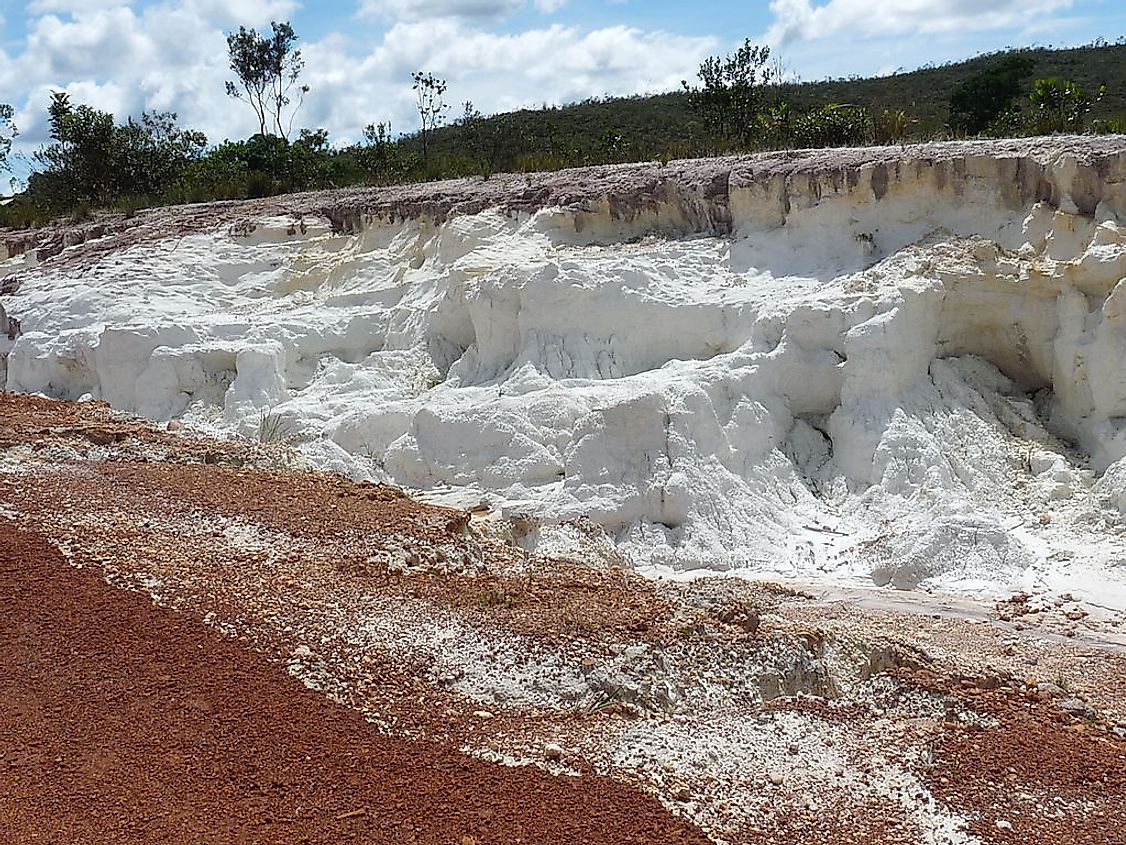Top 12 Kaolin Exporting Countries

Kaolin is a clay material and part of the industrial minerals group, which are geological materials that are mined for their economic value. It is a silicate mineral, which are rock-forming minerals that compromise most of the Earth's crust. It is a soft and earthy mineral that is usually white but can appear as different colors depending on the concentrations of iron oxide. Kaolin is also known as china clay.
The Kaolin Exporting Process
Extraction
The process of extracting kaolin begins with geologists during research to identify land with potential kaolin deposits. Once a piece of land is deemed to have potential, kaolin holes must be drilled around the area to get core samples of the earth to send back to laboratories to determine the quality and size of the kaolin deposit. If the area is considered an acceptable site for kaolin mining, then the layers of ground above the kaolin is removed and extracted using front-end loaders, backhoes, and other heavy machinery. This method that is called open pit method. Sometimes it is extracted using hydraulic mining and dredging.
Processing
Once the kaolin is extracted, it is transported, usually via truck, to processing plants that are near the mine. Kaolin can be either dry- processed or wet-processed depending on its usage. Dry-processed kaolin mainly is used in the rubber industry. In dry processing, the raw kaolin is crushed into the desired size and dried using rotary dryers. It is then pulverized, and air floated to remove most of the coarse grit on the kaolin. Wet processing of kaolin is used in the paper making industry. Wet processing starts by mixing the kaolin with water to produce a slurry, which is then fractionated into coarse or fine fractions using centrifuges. Next using various chemical, physical and magnetic methods the slurry is refined. Then the slurry is filtered and had the water removed from it using a filter press. Lastly, the slurry material may be further processed by drying in a dryer, or it will be shipped right away.
Shipping
As the kaolin comes out of processing and goes to the loading dock, it is put into a bag and has the air pressure squeezed out of it by machines. Then the bags of kaolin are loaded directly into trucks. From there, the trucks filled with kaolin bags will drive to the destination to deliver the shipment. In other cases, kaolin is transported by train or barge depending on its route and final destination. If kaolin is transported overseas, it is done via large ocean freighters.
Applications of Kaolin
As mentioned in the processing section kaolin is used in the rubber industry and the paper industry. Kaolin is used in the rubber industry for modifying rubbers properties during vulcanization. In the paper industry, kaolin serves as a paper coating to improve appearance and printability. Kaolin also serves as a valuable component in porcelain, China, and other tableware. Kaolin is used as an architectural coating to provide increased opacity and stain resistance, among other benefits. It is used in automotive coatings to provide film smoothness and corrosion resistance, among other benefits. Surfaced treated kaolin can also be used in wires and cables to help improve physical and electrically performance.
The Kaolin Importers
According to the Observatory of Economic Complexity (OEC) the biggest importer of kaolin is Japan, who imports 8.3% of the worlds kaolin. The next biggest importers after Japan are Germany (7.5%), Belgium-Luxembourg (7.4%), Finland (6.4%), China (6.2%) and Italy (5.8%). The biggest importers in other regions of the world are Canada (3.8%) for North America, Egypt (1.9%) for Africa, Argentina (0.55%) for South America, Australia (0.26%) for Oceania.
Top 12 Kaolin Exporting Countries
| Rank | Country | Kaolin Exports in 2015 (USD) |
|---|---|---|
| 1 | United States | $561,703,000 |
| 2 | Belgium | $229,905,000 |
| 3 | United Kingdom | $221,561,000 |
| 4 | Brazil | $197,002,000 |
| 5 | Ukraine | $118,026,000 |
| 6 | China | $110,780,000 |
| 7 | Czech Republic | $66,267,000 |
| 8 | Germany | $57,068,000 |
| 9 | France | $45,912,000 |
| 10 | Bulgaria | $22,385,000 |
| 11 | Spain | $21,091,000 |
| 12 | India | $16,164,000 |











